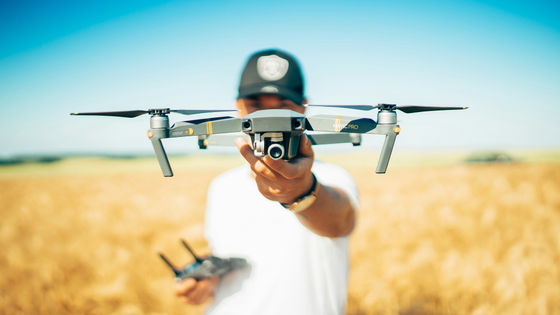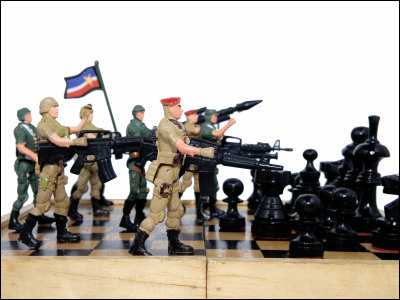What was the nuclear warning system once used in the UK?

From the Second World War to the end of the 1980s, the UK introduced various nuclear warning systems to protect its citizens. Steve Scanlon, who worked for the Post Office before privatization and maintained early warning equipment from 1978 to 1981, explains what systems were in place.
British Cold War Nuclear Warning System
Communications
http://www.roc-heritage.co.uk/communications.html
With the start of the Second World War, the principle that air raid warnings were under the control of the police was established in the UK. Although centralized control by the police began, there was no national warning system, and information was disseminated to each city through the local police, who then sounded the sirens. Here, to avoid the need for personnel near the siren operation panel, a dedicated line was laid with a control device designed and maintained by the Royal Post Office (GPO), which could be remotely controlled from the police station.
The siren's operation buttons are color-coded according to their purpose; when it was first introduced there were only two types, red and white, but after nuclear weapons were introduced grey and black were added, bringing the total to four.
As the name suggests, the 'Red Attack Alert' alerts you to an upcoming attack and consists of a four-second ascending sound followed by a four-second descending sound.
The 'Grey Alert' was set up to warn of approaching radioactive fallout one hour in advance, and consisted of a standard warning sound with flap noise added.
A 'black fallout alert' was issued to signal the arrival of radioactive fallout in a designated area, and was not to be sounded by a siren but by three fireworks, three gongs, or three loud blasts by a police whistle.
The 'White Attack Information' is a siren that sounds for 60 seconds when an air raid is successfully thwarted or when the radioactivity of fallout from a nuclear explosion has decreased to a safe level. If you hear this notification, you can decide that it is safe to come out of your shelter.
The end of World War II and the beginning of the Cold War called for a different kind of warning system. The main concern was the use of intercontinental ballistic missiles (ICBMs), and a mechanism was needed to quickly detect and report missiles launched by enemy nations.
The UK did not develop its own ICBM radar, but negotiated with the Americans to use the American system, with data processed at RAF Fylingdale.
Below are radars built during the Cold War.

Each of the three radomes contained a rotating radar head with a detection range of about 3,000 miles, with one head scanning at an angle of 2.5° above the horizon and the other at an angle of 5° above the horizon. As a missile was launched and traversed the 2.5° and 5° beams in sequence, a third radar, capable of tracking many objects simultaneously, tracked the missile and calculated its trajectory. If the calculated trajectory and other characteristics indicated it was a missile, a situational display console warned of an imminent attack.

The warning was supposed to be initially routed to the Ministry of Defence or the UKWMO, and was thought to have given the public four minutes to be warned of an impending attack, unless the attack was coming from a submarine close to shore, although some have suggested it may have only been three minutes.
Apart from these large-scale monitoring systems, work was also underway by the GPO and UKWMO to develop a national early warning system. In 1950-51 a system was developed to provide a special broadcast information service, looking for a means of providing simultaneous one-way communication from a few control centres to a large number of receiving points. This early development produced a device called the WB200, which used circuitry similar to that found in 1950s home radio receivers.

Although progress was slow, development finally began in January 1959. Plans for the first phase, consisting of 2,700 exchanges, 150 control centers, and 14,000 subscriber receivers, were started, and by the end of 1963, orders had been placed for 5,500 exchanges, 254 control centers, and 21,500 receiving points. The attack warning system, known as HANDEL, was fully implemented by 1965, with a voice broadcast system called 'WB400' and a siren control system called 'WB600' deployed at key locations.
When an attack was about to take place, the Northern Radar System in Colorado would send warnings to the UK. These warnings would then be immediately relayed to UKWMO and other organisations, who would then use voice broadcasting systems in key locations to warn the public.
The underground observation post had a speaker like the one in the image below that emitted a constant 'beep beep' sound, and was supposed to send out a 'red attack alert' when a possible attack was confirmed. The HANDEL system was used until the end of the Cold War.

The chord name Handel comes from the composer George Frideric Handel's 'Judas Maccabaeus (Pt.2, No.45)'. The title of this movement is 'Sound an alarm!'
Handel: Judas Maccabaeus HWV 63 / Part 2 - 45. Aria: 'Sound an alarm!' 46. Chorus: 'We hear, we...' - YouTube
Related Posts:
in Posted by log1p_kr







